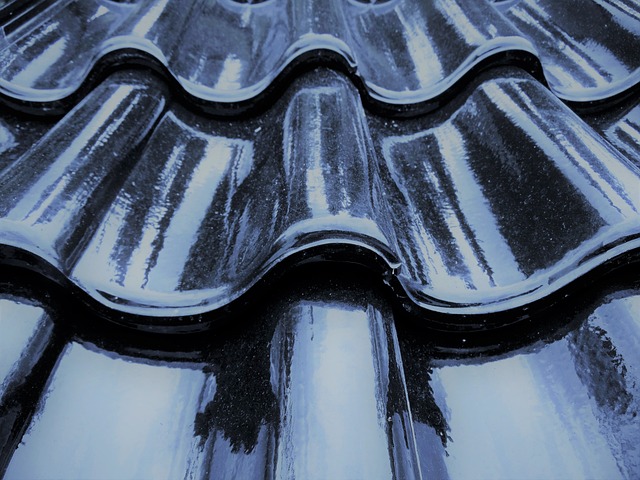Roofers play a critical role in maintaining the safety and functionality of train infrastructure by performing essential tasks at elevated heights. Their work is characterized by addressing the challenges posed by environmental factors and wear from frequent use. Safety protocols are rigorously enforced, with roofers required to use personal protective equipment such as harnesses and helmets to prevent falls. Advanced safety systems like fall arrest systems and mobile elevating work platforms (MEWPs) are employed to further protect workers. This commitment to safety is crucial not only for the roofer's well-being but also for ensuring the operational integrity and passenger safety of trains. The rail industry continuously collaborates with safety experts to improve equipment and training, adhering to new standards and technologies to address the risks associated with high-altitude work. The sector's proactive approach in roofer safety and train maintenance reflects its dedication to both occupational safety and the longevity of rail systems. Keywords: Roofers, train maintenance, height safety protocols, personal protective equipment (PPE), fall arrest systems, mobile elevating work platforms (MEWPs).
When it comes to maintaining the integrity of trains, the role of roofers extends beyond mere repair and upkeep. Ensuring the safety of these professionals is paramount, as they work at heights where a misstep could lead to severe consequences. This article delves into the critical aspects of height safety protocols for roofers in train maintenance, emphasizing personal protective equipment (PPE), risk assessment strategies, and the integration of fall protection systems. We explore the impact of weather conditions on rooftop operations, the necessity of comprehensive training programs, and the latest technological advancements that enhance safety. Additionally, we will examine the legal framework governing height safety in rail operations and the pivotal role of certification bodies in maintaining compliance. With a focus on fostering a culture of safety and outlining emergency response protocols, this article aims to provide a holistic overview of the measures taken to ensure that roofers working at heights on trains do so safely and effectively.
- Understanding the Role of Roofers in Train Safety and Maintenance
- The Importance of Height Safety Protocols for Roofers Working on Trains
Understanding the Role of Roofers in Train Safety and Maintenance

Roofers play a pivotal role in ensuring the safety and integrity of train infrastructure, particularly when it comes to working at heights on trains’ rooftops. Their expertise is crucial for the maintenance and repair of train roofs, which are exposed to various environmental stressors such as extreme weather conditions and wear from regular use. The implementation of stringent safety protocols is essential for these professionals as they navigate the complex architecture of train structures. These protocols include the use of personal protective equipment (PPE), such as harnesses and helmets, to mitigate fall risks. Additionally, roofer safety is intertwined with the maintenance of the trains themselves; regular inspections and repairs at height require advanced techniques like fall arrest systems and mobile elevating work platforms (MEWPs). These measures not only protect the workers but also safeguard the integrity of the trains, ensuring they remain operational and safe for passengers. The collaboration between roofer teams and safety specialists is ongoing, with continuous improvements to equipment and training programs being rolled out to adapt to evolving safety standards and technologies in this dynamic field. Through these efforts, the rail industry ensures that roofers can effectively carry out their high-altitude tasks without compromising on safety or the longevity of the trains they maintain.
The Importance of Height Safety Protocols for Roofers Working on Trains

Train maintenance and construction are specialized fields that often require roofers to work at heights, where fall risks are inherently high. The importance of height safety protocols in this context cannot be overstated; they are critical for ensuring the safety and well-being of workers who navigate the complex structures of trains. Roofers must adhere to rigorous safety measures, which include the use of harnesses, fall arrest systems, and safety nets specifically designed for such environments. These protocols not only protect individuals from potential falls but also safeguard the integrity of the train’s structure by preventing accidental damage during repairs or maintenance.
Effective height safety protocols are a blend of proper equipment, comprehensive training, and adherence to industry standards. Roofers working on trains must be thoroughly trained in the use of personal protective equipment (PPE) and must be familiar with the specific challenges posed by train roofs, such as irregular shapes, limited access points, and the dynamic nature of trains when in motion. The implementation of these protocols is essential for creating a safe work environment that minimizes the risk of accidents or injuries. It is the collective responsibility of employers and workers to ensure that height safety measures are consistently followed, thereby upholding a culture of safety that prioritizes human life and operational efficiency.
Roofing professionals play a pivotal role in train safety and maintenance, particularly when working at heights. The implementation of robust height safety protocols is not only a cornerstone for their well-being but also an integral component of ensuring the integrity and functionality of rail infrastructure. This article has underscored the significance of these measures, offering insights into best practices that enhance both roofer efficiency and train safety. Adhering to these protocols safeguards the lives of those who perform vital maintenance tasks high above ground, contributing to a safer commuter experience. As the demand for reliable transportation systems grows, so too must our commitment to advanced height safety measures for roofers in the rail industry.
